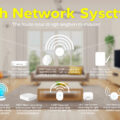In the realm of telecommunications, the efficient use of frequency bands is crucial for facilitating seamless wireless communication. The configuration of these frequency bands directly affects connectivity quality, transmission efficiency, and the overall performance of communication networks. This article delves into the intricacies of frequency band configuration, exploring its significance, underlying principles, and practical applications, particularly in the context of wireless technologies like 5G.
Understanding Frequency Bands
A frequency band refers to a specified range of frequencies within the electromagnetic spectrum that is allocated for particular uses. Each frequency band has defined upper and lower limits, impacting how devices interact and communicate over the airwaves. For instance, mobile networks operate across various frequency bands to support technologies ranging from 2G to 5G, with each band optimized for specific applications, such as voice transmission, data streaming, and multimedia services.
The International Telecommunication Union (ITU) classifies frequency bands into several categories, such as Extremely Low Frequency (ELF), Ultra High Frequency (UHF), and Terahertz (THF), among others. Each category not only defines the specific ranges of frequencies but also dictates regulatory aspects of the transmission to minimize interference among different services operating within the same spectrum.
Frequency Band Configuration
Configuring frequency bands is essential for maximizing the efficiency and reliability of wireless networks. This process typically involves several parameters:
-
Center Frequency: This is the midpoint of the frequency band being utilized. Setting the correct center frequency ensures that signals are optimally transmitted and received.
-
Absolute Radio Frequency Channel Number (ARFCN): A unique identifier assigned to each radio channel allows devices to communicate effectively within a specific band.
-
Global Synchronization Channel Number (GSCN): This parameter indicates the timing of synchronization signals, critical for maintaining consistent communication across devices.
-
Channel Bandwidth: The width of the channel, measured in Hertz, directly impacts the data transfer rate. Wider channels can support higher data throughput, essential for applications demanding substantial bandwidth, such as video streaming and online gaming.
-
Subcarrier Spacing: The spacing between subcarriers in Orthogonal Frequency Division Multiplexing (OFDM) systems must be defined carefully to prevent overlap and ensure clear signal transmission.
-
Mapping Pattern: Conforming to standards such as 3GPP (3rd Generation Partnership Project) ensures interoperability among different technologies and devices.

Practical Application: 5G Network Configuration
In 5G networks, frequency band configuration takes on added complexity due to its adoption of diverse frequency ranges. 5G networks utilize two primary ranges:
-
Frequency Range 1 (FR1): Spanning sub-7 GHz frequencies, this range largely overlaps with existing LTE bands, facilitating a smoother transition to 5G.
-
Frequency Range 2 (FR2): Encompassing frequencies from 24.25 GHz to 71.0 GHz, this range is designated for new high-bandwidth applications, including ultra-reliable low-latency communications (URLLC).
In configuring frequency bands for 5G, telecommunications engineers must consider factors such as coverage, capacity, and signal propagation characteristics. The choice of frequency not only influences the physical range but also determines the data throughput capabilities of the network.
Regulatory Considerations
The configuration of frequency bands is not merely a technical issue; it is also heavily regulated to ensure equitable access and minimize interference. National and international regulatory bodies, such as the International Telecommunication Union (ITU) and the Federal Communications Commission (FCC) in the U.S., are responsible for overseeing the allocation of frequency bands. These organizations enforce rules regarding maximum transmission power, types of permissible technology, and interference mitigation strategies to maintain orderly use of the available spectrum.
Conclusion
Effective frequency band configuration serves as the backbone of modern wireless communication systems. As 5G technology and future wireless innovations continue to evolve, understanding the complexities of frequency bands and their configuration will be essential for network designers and engineers. By optimizing these elements, stakeholders can unlock the full potential of wireless connectivity, ensuring faster, more reliable, and efficient communication experiences for users across the globe.
In a world increasingly dependent on wireless technologies, mastering frequency band configuration is not just an asset but a necessity for advancement in telecommunications.



